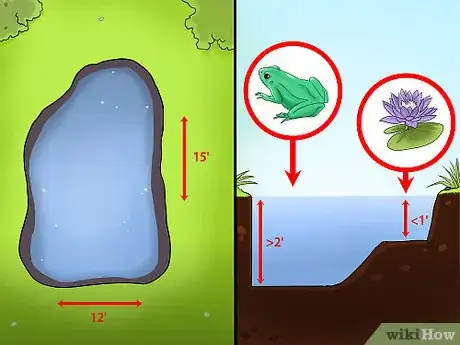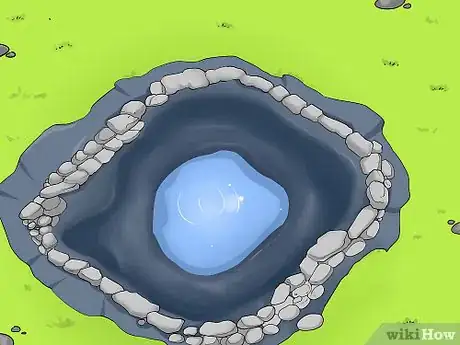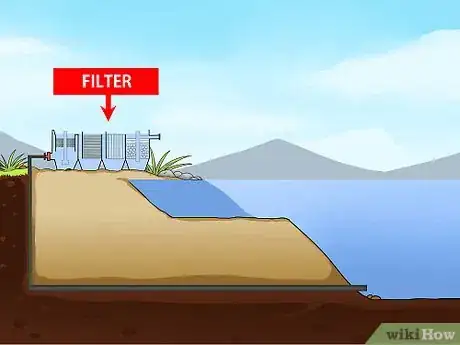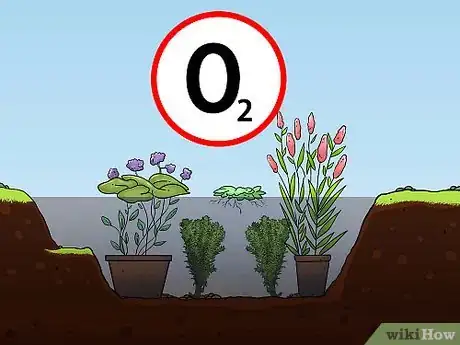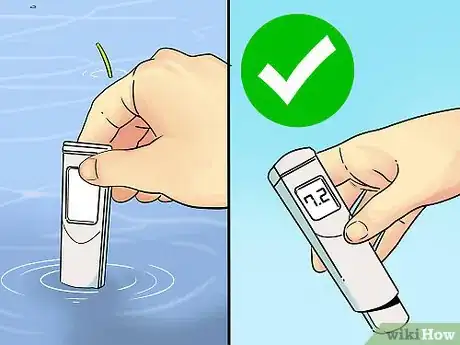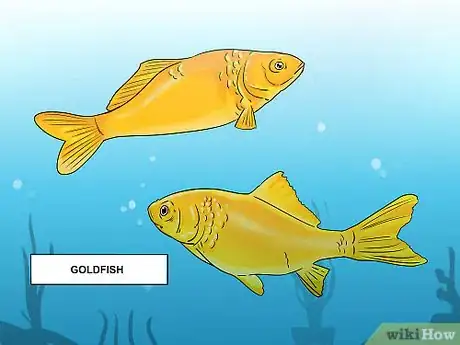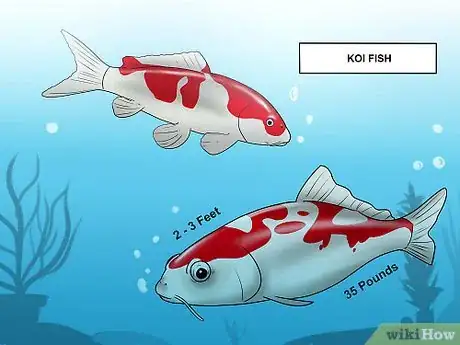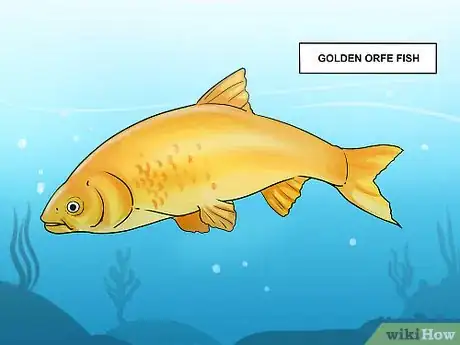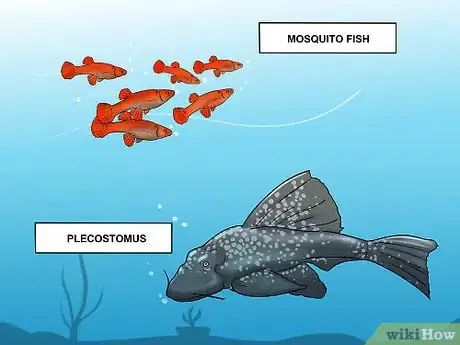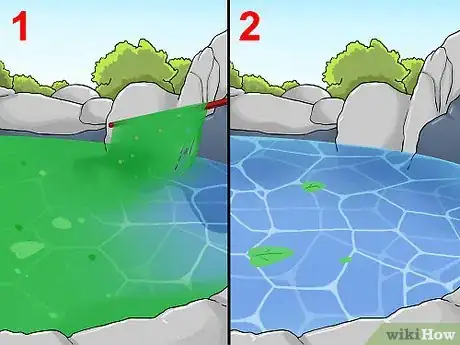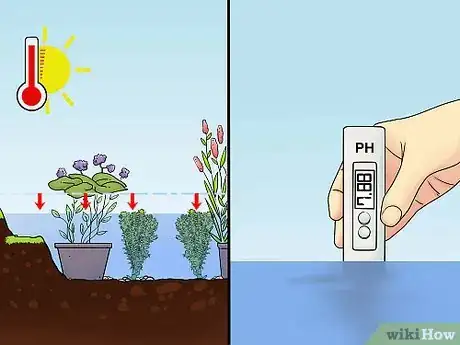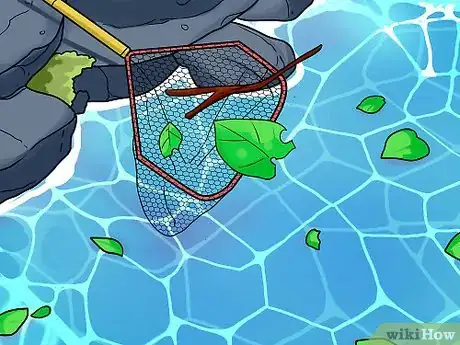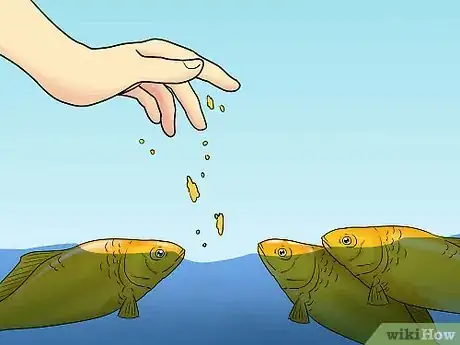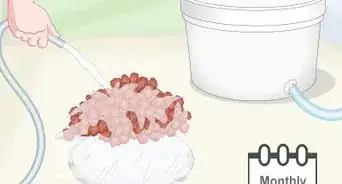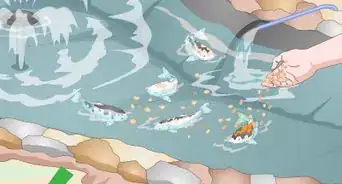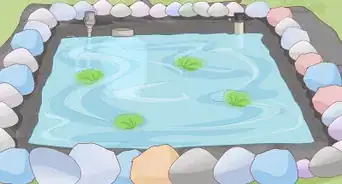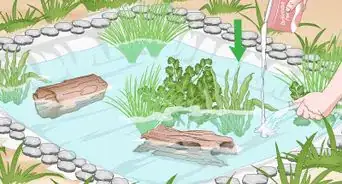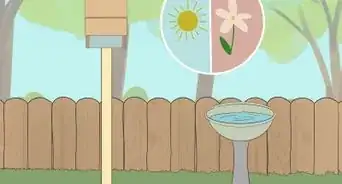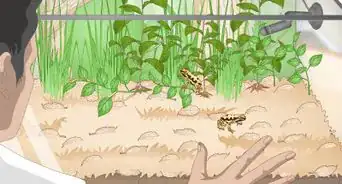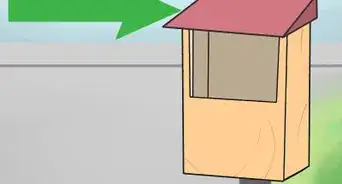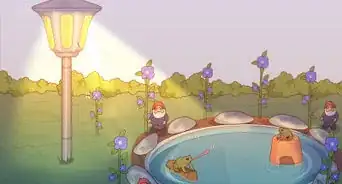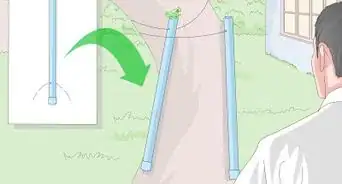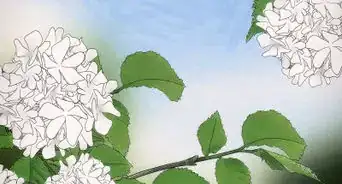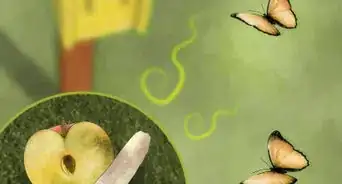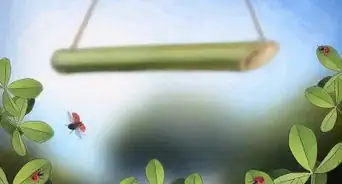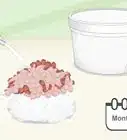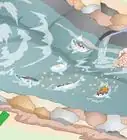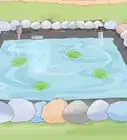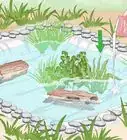This article was co-authored by Scott Johnson. Scott Johnson is the Owner and Lead Design Consultant for Concrete Creations, Inc., an award-winning landscape and design company based in the San Diego, California metro area. He has over 30 years of experience in the pool and landscape construction industry and specializes in large estate outdoor environment construction projects. His work has been featured in San Diego Home & Garden Magazine and on Pool Kings TV Show. He earned a BS degree in Construction Management with an emphasis in Architecture and CAD design from Northern Arizona University.
wikiHow marks an article as reader-approved once it receives enough positive feedback. In this case, 100% of readers who voted found the article helpful, earning it our reader-approved status.
This article has been viewed 63,098 times.
Garden ponds can add value to your home, and adding fish to a garden pond can add an interesting and beautiful element to your pond. Garden ponds are each unique to their owners, but some things need to be fairly uniform in order to keep a stable, healthy environment for your fish. If you already have a pond in place, it takes just a few additional steps to get your garden pond ready to be stocked with some beautiful fish, these steps can be found here in this article.
Steps
Preparing Your Pond
-
1Check the dimensions of your pond. In order to stock your garden pond with fish, you will need to make sure the pond is large enough to support the fish you intend to introduce. Fish need a certain amount of space, as well as variation in depth.
- Your pond should have a minimum 12-15 square feet of surface area in order to add fish.
- The pond will need one area that is greater than two feet deep for hibernating amphibians if you intend to have any frogs.
- The pond will also need a number of areas that are under one foot in depth to support different species of aquatic plant life.
-
2Ensure the pond liner is appropriate and intact. If your garden pond is manmade, it likely has a liner to hold the water in. The material of the liner is made of isn't the only thing to look out for. The slope the liner creates in the pond is also important depending on the types of plant life and animals you intend to keep in the pond.
- Pond linings are usually made from clay, concrete or pre-formed plastic.
- Plastic linings may create too steep a slope to the pond to maintain amphibians in your garden pond.
- Make sure the lining is intact and holds water, or that the pond is filled from a continuous source to be certain the pond won't drain once you stock it with fish.
Advertisement -
3Add filtration to your garden pond. While there are some kinds of fish you can keep in a garden pond without any form of filtration, your options can be significantly increased if you choose to add a mechanical or biological filter. Either filter system can be purchased in specialty stores or even large hardware stores.
- Mechanical filters require more frequent cleaning, as they rely on sponges or other filters to capture particles as they flow through the water.
- Biological filters can simply be placed in the pond, but may require that you ensure the water quality remains within acceptable parameters for the bacteria in the filter.
- Goldfish and Koi fish can both be kept without a filtration system.
-
4Add oxygenating plants. Keep your fish happy and healthy by maintaining a high oxygen level in the water of your garden pond. There are plants you can purchase that will naturally add oxygen to the water of your pond without any additional equipment.
- Anacharis is considered the best plant for oxygenating purposes. It is commonly recommended that you add one bunch of anacharis for each square foot of your garden pond to keep the water oxygen levels optimal for fish.
- Water sprites also serve as capable oxygenators but are not quite as effective.
-
5Be certain the pond is settled before adding fish. You need to be certain that the water quality is high enough to maintain a population of fish and that the plants and filtration devices are settled and established before introducing fish to your garden pond. Do this by completing the following:
- Be sure plant roots are covered with soil and gravel to prevent fish from accidentally uprooting and killing them as they swim.
- Use a water tester to check the PH levels of the water. Ideally, your pond should be between a 7.2 and 7.8 PH level.
- Wait for your plants to begin growing in your pond to ensure they will survive being transplanted.
Choosing Your Fish
-
1Add goldfish to your garden pond. Goldfish are the most common and most popular choice of fish for garden ponds. Goldfish are hardy fish that require very little supervision and often do not even require a filtration system for your pond.
- Goldfish can live for years in well maintained garden ponds.
- There are a number of colors and patterns goldfish can be found in.
- Goldfish are also available in a series of different body types thanks to selective breeding. Goldfish options are really quite varied.
EXPERT TIPScott Johnson is the Owner and Lead Design Consultant for Concrete Creations, Inc., an award-winning landscape and design company based in the San Diego, California metro area. He has over 30 years of experience in the pool and landscape construction industry and specializes in large estate outdoor environment construction projects. His work has been featured in San Diego Home & Garden Magazine and on Pool Kings TV Show. He earned a BS degree in Construction Management with an emphasis in Architecture and CAD design from Northern Arizona University.Landscape & Design Consultant
 Scott Johnson
Scott Johnson
Landscape & Design ConsultantOur Expert Agrees: When you're first adding fish to your pond, start with smaller goldfish and some mosquito fish. Monitor the fish and provide them with plenty of hiding spots to protect them from birds and turtles. Then, if they do well, you can add in other fish, like koi.
-
2Choose Koi fish for your garden pond. Koi fish are the second most common type of fish to be found in garden ponds. They are a resilient breed of fish but may require filtration systems to be kept healthy. Koi fish can survive for years in well maintained ponds.
- Koi fish can grow to be up to 2-3 feet and even weigh as much as 35 pounds in large enough garden ponds.
- Koi fish regularly live to be fifty years old in well maintained garden ponds.
- Ponds with less than a thousand-gallon capacity may not be well suited for koi fish because of their ability to grow so large in size.
-
3Introduce golden orfe fish to your garden pond. Golden orfe fish are quick moving fish that prefer to live in schools. They tend to be yellowish orange and can be considered high maintenance fish for garden ponds and similar situations.
- Golden orfe fish require water quality that is significantly higher than that of goldfish or koi fish, which makes them less popular for garden ponds.
- Never introduce fewer than three golden orfes to a pond, as they may not survive when not in numbers.
-
4Add Plecostomus or mosquito fish to your garden pond. These last two types of garden pond fish are less common than others because they may require additional care or considerations as compared to the other more common types of pond fish.
- Plecostomus fish start very small but can grow up to two feet in length and cannot survive colder months in a garden pond. Some owners with large fish tanks take their Plecostomus fish indoors for the winter.
- Mosquito fish do not grow to be very large and tend to look like guppies. They are commonly introduced to ponds to eat mosquito larvae before they have a chance to hatch, but goldfish and koi fish will both serve the same purpose.
Caring for Your Fish
-
1Combat algae overgrowth. Algae can become a serious issue to maintaining appropriate oxygen levels in your garden pond. Algae absorbs oxygen and its growth prevents sunlight from reaching plants beneath the surface.[1]
- Remove things that are shading your garden pond, as algae will grow in the shade.
- Make sure to remove overgrown oxygenator plants or water lilies.
- Adding store bought algaecide will keep algae from becoming an issue in your pond.
-
2Maintain water levels. Making sure your fish survive in the garden pond will require that you maintain a fairly even water level and quality. In order to do so, you will need to check the level of water in your garden pond regularly and add chemicals if necessary to restore the PH balance.[2]
- Top off the water level on hot days as you lose water to evaporation.
- Check the PH balance when water levels change to ensure it remains within acceptable standards for your fish.
- Treat the water as necessary to retain PH balance as you add water.
-
3Keep your garden pond free of contaminates. You will need to keep your garden pond clean from floating materials that could injure your fish or affect the water quality. Doing so is fairly easy with basic pool cleaning equipment.[3]
- Use a pool skimmer to remove fallen leaves and other things floating in the water.
- Use a net to remove larger objects or dead wildlife from your pond to ensure you keep the other wildlife healthy.
-
4Feed your fish. While your pond will probably provide plenty of food for your fish naturally through insects and plants, it's important to add high quality fish food to make sure your fish receive all the nutrients they need to live a long, healthy life.
- Go to a pet store to find the right kind of food for the fish you choose to add to your garden pond.
- You can purchase feeding stations that will distribute food for you if you are unable to get to your garden regularly.
Community Q&A
-
QuestionCan I add small fish to a pond with large Koi?
 Community AnswerYes, there are many kinds of fish you can keep in a pond with Koi fish. Some examples are goldfish, pleco fish or catfish.
Community AnswerYes, there are many kinds of fish you can keep in a pond with Koi fish. Some examples are goldfish, pleco fish or catfish. -
QuestionI drained 2.5 feet and left about one foot of water in my pond. Can I replace the 2.5 feet with tap water? There are 12 goldfish in the pond.
 Community AnswerYes, but first buy a bottle of 'Tap Safe' from the fish section of a pet shop. It will get rid of the chemicals in tap water that may harm the goldfish.
Community AnswerYes, but first buy a bottle of 'Tap Safe' from the fish section of a pet shop. It will get rid of the chemicals in tap water that may harm the goldfish. -
QuestionMy pond is only forty litres of water. Is it OK for a couple of fish?
 Community AnswerYes. As long as it's only around 4-5 fish.
Community AnswerYes. As long as it's only around 4-5 fish.
References
About This Article
To add fish to a garden pond, start by setting up a filtration system and adding oxygenating plants, such as anacharis and water sprites, to help keep your fish healthy. Additionally, check the pH level of the water is between 7.2 and 78 before adding your fish. If you're not sure what kind of fish to add, try koi or goldfish if you want a hearty, low-maintenance variety. Alternatively, try varieties, like golden orfe or mosquito fish, if you're prepared to spend more time and money. To learn how to feed your garden pond fish, keep reading!
